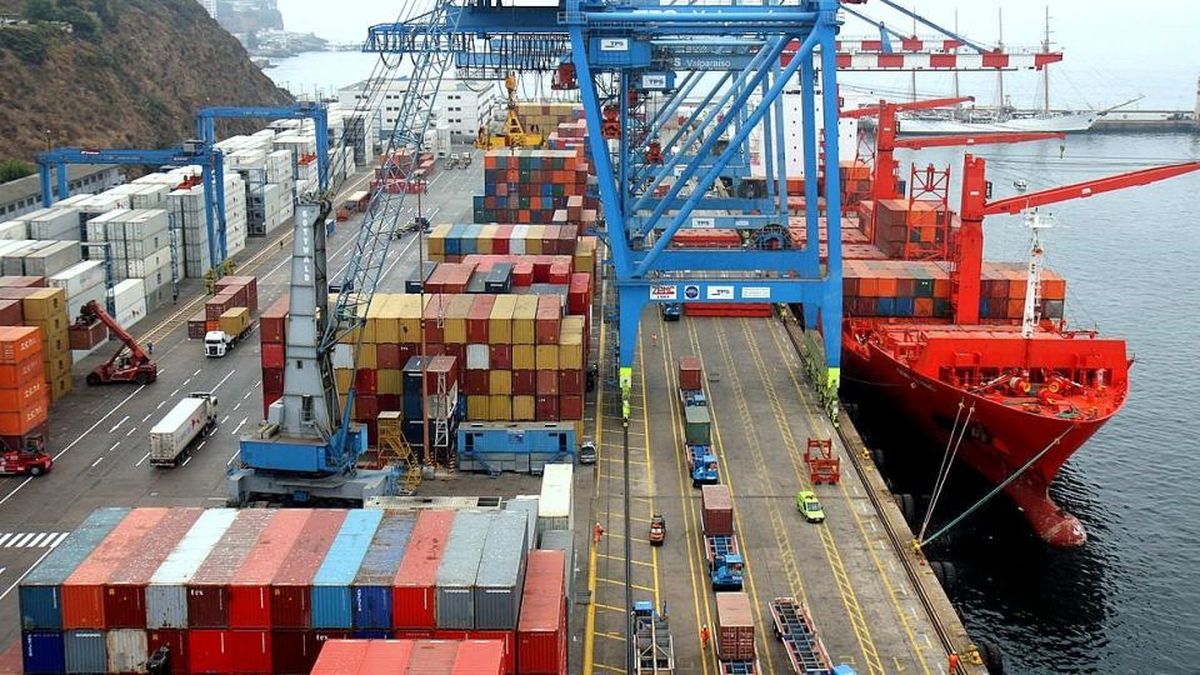The different reports that circulate in the City at this time analyze that The seasonal pickery of pesos, typical of June and July, is finished and before a lower liquidation of the agriculture, especially at the end of the month, the exchange pressures could be accelerated. To this is added the recent publication of the Balance of payments of the first quarter of 2025which lit alerts between economists about the Sustainability of the external balance proposed by the economic program.
“After the beginning of phase 3 of the program, with the total release of the stocks in April for human and partial people for legal persons, given the inconvenience of releasing stocks, The official exchange rate and the CCL converged below the center of the exchange bands ($ 1,200), oscillating between said value and minimums of $ 1,150defining a context of low volatility, helped by the expectations of a seasonal increase in the demand for weights and the rhythm of liquidation of agriculture, “they recalled from IEB.
Taking into account this stabilization towards the center of the band, for these experts it should not “surprise us that Before a context of completion in the seasonal increase in the demand for weights and decreases in the liquidation of agricultural dollars, said oscillation tends to move above the center of the bandbut maintaining a similar amplitude of $ 50, as we have observed in recent days, “they explained from the same broker.
Agro: Record settlement is expected the first weeks of July, and then?
It should be noted that this week the transitory decline of withholdings to soybeans and corn ended, which is why the last June wheels jumped the Sworn statements of sales to Exterior (DJVE). In the last 5 days of June The DJVE reached 12.4 billion tons, historical maximum for a 5 -wheel period. “It is a key fact to imagine the dynamics of the next 3 weeks, since exporters have 15 business days to liquidate 95% of the currencies corresponding to the DJVE,” they said from Facimex.
The impact on the market will be significant: private estimates indicate that the sworn statements of foreign sales (DJVE) of June exceeded US $ 8,000 million, compared to an effective liquidation of the agro for USD 3.7 billion. This leaves a remnant greater than US $ 4,000 million that would enter the market during July. The first data of the month already reflect this trend, with the agro -export sector liquidating US $ 381 million on Monday, US $ 269 million on Tuesday YU $ S517 million Wednesday. In total, The last five wheels accumulated US $ 1,500 million, the highest level since the beginning of June 2023, when the Dollar Soja III program ended.
Exchange coverage demand: Is it to worry?
As mentioned above, the second semester started with the exchange rate above the center of the band. As experts expressed among the causes were found: The currency demand to cancel expenses by card abroad, the closure of Carry Trade positions, the dollarization of the bonuses and the liquidity injection for $ 4.3 billion with the last bidding of debt in pesos that weighed this last week.
But the big question is how the story will follow: for the last report of Facimexalthough there will be Extra pressures on the dollar will not affect the stability scenario. “Once the extraordinary liquidation of agriculture will begin to weigh more other factors. First, The seasonal fall of agro exports will be reinforced this yearhaving advanced the liquidation of the second semester product of the transitory decline of the withholdings, “they detailed.
Second, mentioned to The evolution of the dollar card credit that showed that the expenses by card abroad are kept higher than usual at this time of year, possibly exacerbated by the World Cup FIFA clubs. Third, Electoral processes often motivate an increase in dollarization as a coverage in the face of uncertainty. “While these factors will gain influence in the coming weeks, we do not expect them to affect the stability scenario when compensated by capital flows,” they determined.
Current account deficit: why it was generated and what problems could bring
The market also began to look at the current account deficit that accounts for exchange abroadthat is, it reflects whether more goods are being imported, and services than income abroad than exports or receives. Obviously this external imbalance It could generate pressure on the exchange rate and reserves if properly financed. Despite this the same, The appreciation of the weight had enough to do with this mismatch that, however, would bring other conflicts in tow.
“The current account numbers to the first quarter showed an issue on which we have been focusing on our reports. The appreciation of the real exchange rate (The official weight and CCL weight were strengthened 47.5% and 76.8% in the first quarter of this year compared to the same quarter of a year ago, respectively), Together with an economic activity and real salaries that improved in the same period they promoted a current account deficit that was $ S5191 million (vs the US $ S176mn surplus in 1T24), “he said SBS group.
From this report they also stressed that The surplus of goods fell while The red of services was the highest in the series adjusted for inflation in dollars. “The TCR effect is notorious, being The trips account that the greatest worsening showedsomething we have been marking when we analyze the dollar outflows for card payments to exterior suppliers in dollars. While the accrual CC data is very lagging, they show the pressure on external accounts, which must be a point to follow closely, both by the government and the market “they pointed out.
For the SBS group, The current account deficit of the second quarter will be lower due to seasonality in the goods surplus, but the focus is in the exits of dollars by other roads. “The existence of current account deficit is not bad for whether to be financed by any way, while, as a percentage of GDP, it is still far from levels compatible with paying crises,” they added.
Finally, experts recommend following The evolution of external accounts and the level of the real exchange rate (TCR) because they show warning signs and recommend closely monitoring the external sector (exports and imports) and how the current account deficit (CC) will be financed. This deficit not only comes for goods, but also for services (such as tourism, freight, etc.) and Although imports of capital goods may have risen for a certain economic recovery, that does not compensate the general red.
Source: Ambito
I am a 24-year-old writer and journalist who has been working in the news industry for the past two years. I write primarily about market news, so if you’re looking for insights into what’s going on in the stock market or economic indicators, you’ve come to the right place. I also dabble in writing articles on lifestyle trends and pop culture news.




